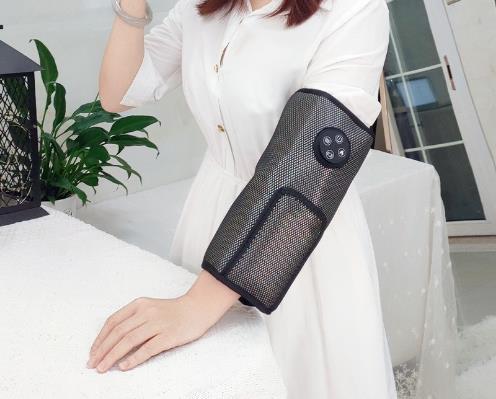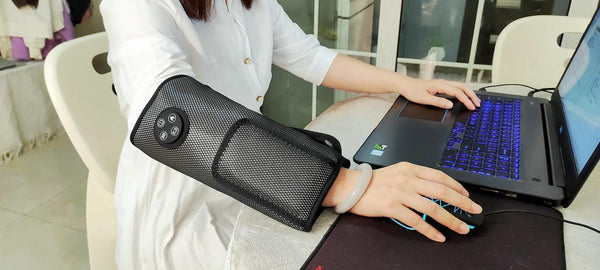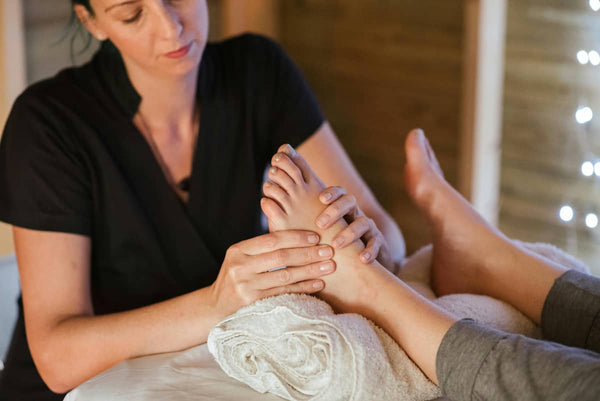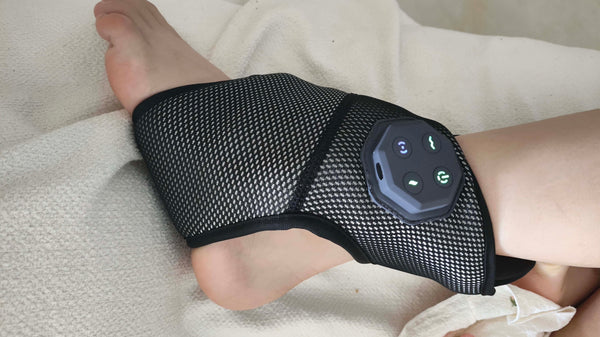
For office professionals who spend long hours at a desk, foot fatigue and poor circulation are common complaints. A foot massager seems like an ideal solution for relief. However, for those living with diabetes, the question of safety becomes paramount. It’s a real point of concern: can a simple device designed for comfort accidentally cause serious harm? The answer isn't a straightforward yes or no; it depends entirely on the type of foot massager machine you use.
The core of the issue lies in the unique challenges of diabetic foot health. Ordinary massagers can pose significant risks due to uncontrolled heat and aggressive mechanical pressure. But can a specialised foot massager for diabetics offer the relief you want without the danger? Let's break down the facts to help you make an informed and safe choice for your daily care routine.
Understanding Diabetic Foot Concerns
Living with diabetes means paying extra attention to your feet, and for good reason. The condition can lead to two main complications that make feet particularly vulnerable: diabetic neuropathy and peripheral arterial disease. These aren't just medical terms; they represent real-world risks that change the rules of foot care.
Diabetic neuropathy is a type of nerve damage that can cause a loss of sensation in the feet. You might not feel a small cut, a blister, or dangerously high temperatures. This is why a standard heated foot massager with imprecise settings is a hazard—a temperature that feels merely warm to someone else could cause a low-temperature burn for you without you ever realising it's happening.
Furthermore, diabetes can affect circulation, reducing blood flow to the lower legs and feet. Poor circulation slows down the healing process, meaning a minor injury like a scrape or a bruise from an overly aggressive massage foot machine can become a serious ulcer or infection. This makes avoiding any form of secondary injury absolutely critical.
Risks of Ordinary Massagers for Diabetic Feet
When you have decreased nerve sensitivity, an ordinary electric foot massager can become a hidden danger. Many off-the-shelf models are designed for people with full sensation, prioritising intense massage over gentle, controlled care. The primary risks are really quite serious and fall into two main categories.
The first is the risk of scalding. Temperatures over 40°C can be damaging to sensitive skin, but without full nerve function, you may not feel the discomfort until it's too late. A simple massager without precise temperature control or an automatic safety shut-off creates a perfect storm for low-temperature burns, which can lead to significant complications.
The second danger is mechanical injury. The mechanical squeezing or rolling mechanisms in many standard massagers can exert excessive local pressure. If you have an area with thinning skin or an undetected sore, this pressure can easily break the skin or worsen an existing ulcer, introducing a high risk of infection. It's simply a risk not worth taking.
How Specialised Massagers Offer Safer Relief
This is where technology designed with therapeutic safety in mind makes all the difference. A specialised foot and ankle massager isn't just about comfort; it's about providing relief within strict safety parameters. Instead of aggressive rollers, these devices often use dynamic air compression. Imagine gentle airbags that rhythmically inflate and deflate, mimicking a soft, kneading massage that encourages blood flow without applying sharp pressure. This technology can dynamically fit different ankle and foot shapes, avoiding the risk of secondary injuries.
For warmth, a good foot massage machine designed for sensitive users will feature Advanced Heat Therapy with multiple, precise levels. This ensures the temperature remains in a safe, therapeutic range, often combined with overheat protection and an automatic 15-minute shutdown timer to fundamentally reduce the risk of burns. It's a really good idea to look for these features.
Finally, material choice matters. Inferior plastics can be difficult to clean and can harbour bacteria. In contrast, some high-quality models, like the Klcosy foot massager, use materials such as imported diving fabric. This kind of material is breathable and moisture-permeable, which helps reduce the risk of infection when your feet are in contact with the device, making it more suitable for the sensitive diabetic patient group.
Key Features for a Diabetic-Friendly Massager
 When searching for the best foot massager for neuropathy, you need to be a discerning shopper. It pays to look past the marketing and focus on the specific safety and functional features. Here is a checklist of what to look for:
When searching for the best foot massager for neuropathy, you need to be a discerning shopper. It pays to look past the marketing and focus on the specific safety and functional features. Here is a checklist of what to look for:
- Precise Temperature Control: Look for a device with multiple adjustable heat settings (e.g., three levels) that keep the temperature safely under a recommended threshold, and an overheat protection feature.
- Air Pressure Technology: Choose a model that uses air compression instead of hard mechanical rollers. This provides a gentler, more diffuse pressure that stimulates circulation without risking injury to specific points.
- Automatic Shutdown Timer: A non-negotiable feature. The device should automatically turn off after a set period, usually 15-20 minutes, to prevent overuse and minimise the risk of low-temperature scalding.
- Hygienic and Quality Materials: The inner lining should be made of a breathable, easy-to-clean material to prevent bacterial growth and reduce infection risk.
- Multi-functional Design: A device like a foot ankle massager can provide comprehensive care. The Klcosy model, for instance, offers combined massage modes with its Targeted Vibration Therapy and Dynamic Air Compression, meeting diverse needs while minimising risks.
Best Practices for Using a Foot Massager Safely
Even with the best foot massager Australia has to offer, its use must be guided by caution and professional medical advice. A massager is an auxiliary tool for daily care, not a replacement for professional medical treatment. Before you even buy a foot massager, it's essential to follow some best practices.
- Consult Your Doctor First: This is the most important step. Have a chat with your GP or diabetes specialist. They can assess your specific condition, including the level of neuropathy and circulation, to confirm if a foot massager is appropriate for you.
- Daily Foot Inspection: Before and after every use, carefully inspect your feet for any cuts, sores, blisters, or changes in colour. Do not use the massager on any area with broken skin or an open wound.
- Start with the Lowest Settings: When you first start using the device, begin with the lowest pressure and heat settings to see how your feet respond. You can gradually increase the intensity if it feels comfortable and causes no issues.
- Always Wear Socks: Using the massager with a clean, dry pair of socks on can add an extra layer of protection for your skin.
Frequently Asked Questions
Is foot massage good for diabetics?
Gentle foot massage can be very beneficial for diabetics as it can help improve circulation and relieve stiffness. However, it must be done correctly, avoiding deep pressure on sensitive areas. Using a specialised foot massager for diabetics with controlled air pressure and safe heat levels is a much safer approach than traditional, intense massage techniques.
Can diabetics use foot massagers?
Yes, many diabetics can safely use a foot massager, provided they choose the right type and get approval from their doctor first. A suitable device must have key safety features like precise temperature control, an auto-off timer, and gentle air compression rather than hard rollers. An ordinary massager machine foot is generally not recommended.
Who should not use a foot massager?Individuals with certain conditions should avoid using a foot massager or consult a doctor first. This includes people with severe peripheral neuropathy, active foot ulcers or open wounds, blood clots (DVT), severe inflammation, or those with a pacemaker (for some electronic models). It is absolutely essential to seek professional medical advice if you have any of these conditions before using any foot massage tools.
This reply is generated based on currently verifiable public information. It is recommended to cross-check key content with authoritative sources. This article is for informational purposes only and does not constitute medical advice. Always consult with a qualified healthcare professional before beginning any new treatment or using any medical device.




0 comments